Choosing the right customer communication platform can make or break your support experience. Drift and Intercom are two well-known options, but they serve different goals. One leans more toward sales, the other toward support.
For teams focused on delivering fast, reliable customer service, understanding those differences is key. And it matters more than ever: 79% of consumers say a positive customer experience is as important as its products and services (Salesforce Research).
This article breaks down how Drift and Intercom compare, especially through a support lens, so you can decide which one better suits your team.
Try Tidio for an all-in-one customer support solution
Drift vs. Intercom: an overview
Both Drift and Intercom are customer messaging platforms, but they were built with different teams in mind. Intercom has become a go-to choice for support-focused companies that need tools like shared inboxes, ticketing, and help center integrations. Drift, by contrast, is geared more toward sales and marketing teams that want to qualify leads and start conversations faster.
As a start, here’s a brief comparison table that also includes Tidio in the mix:
| Tool | Main features | Free version | Pricing starts at | G2 rating |
| Intercom | Help desk, live chat, AI agent (Fin), shared inbox, proactive messaging | ❌ | $29/seat/mo | ⭐ 4.5/5 |
| Drift | Conversational sales, AI chatbots, meeting scheduling, lead routing | Contact sales | ~$2,500/mo (custom) | ⭐ 4.4/5 |
| Tidio | Multichannel inbox, live chat, chatbot builder, AI agent (Lyro), ticketing | ✅ | $29/mo | ⭐ 4.7/5 |
Read more: Find the best Intercom alternatives on the web.
Intercom at a glance
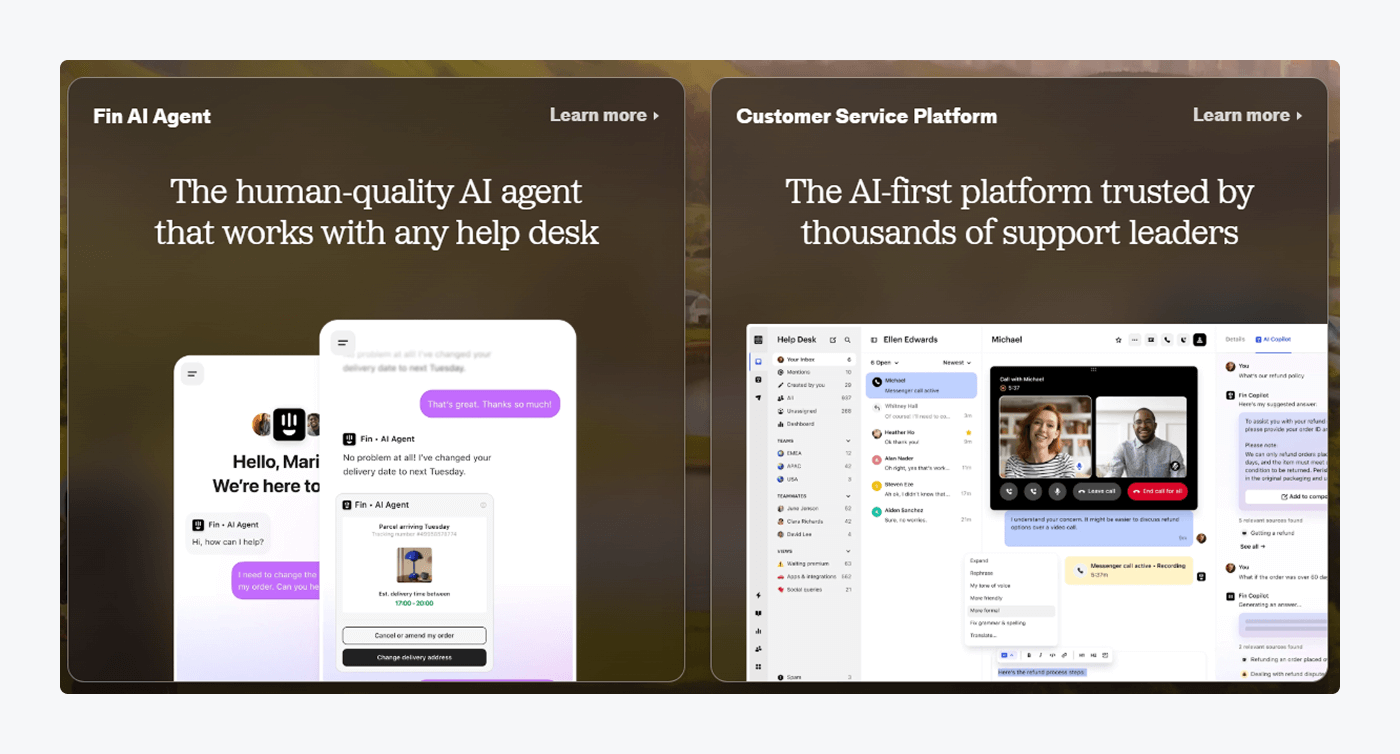
Founded in 2011, Intercom positions itself as an all-in-one customer communication platform. While it offers tools for marketing and engagement, its core strength is in support. Features like a shared inbox, integrated help center, and proactive chat messaging make it especially useful for growing support teams. It’s a popular choice among SaaS companies and startups looking to scale their customer service without switching between multiple tools.
Drift at a glance
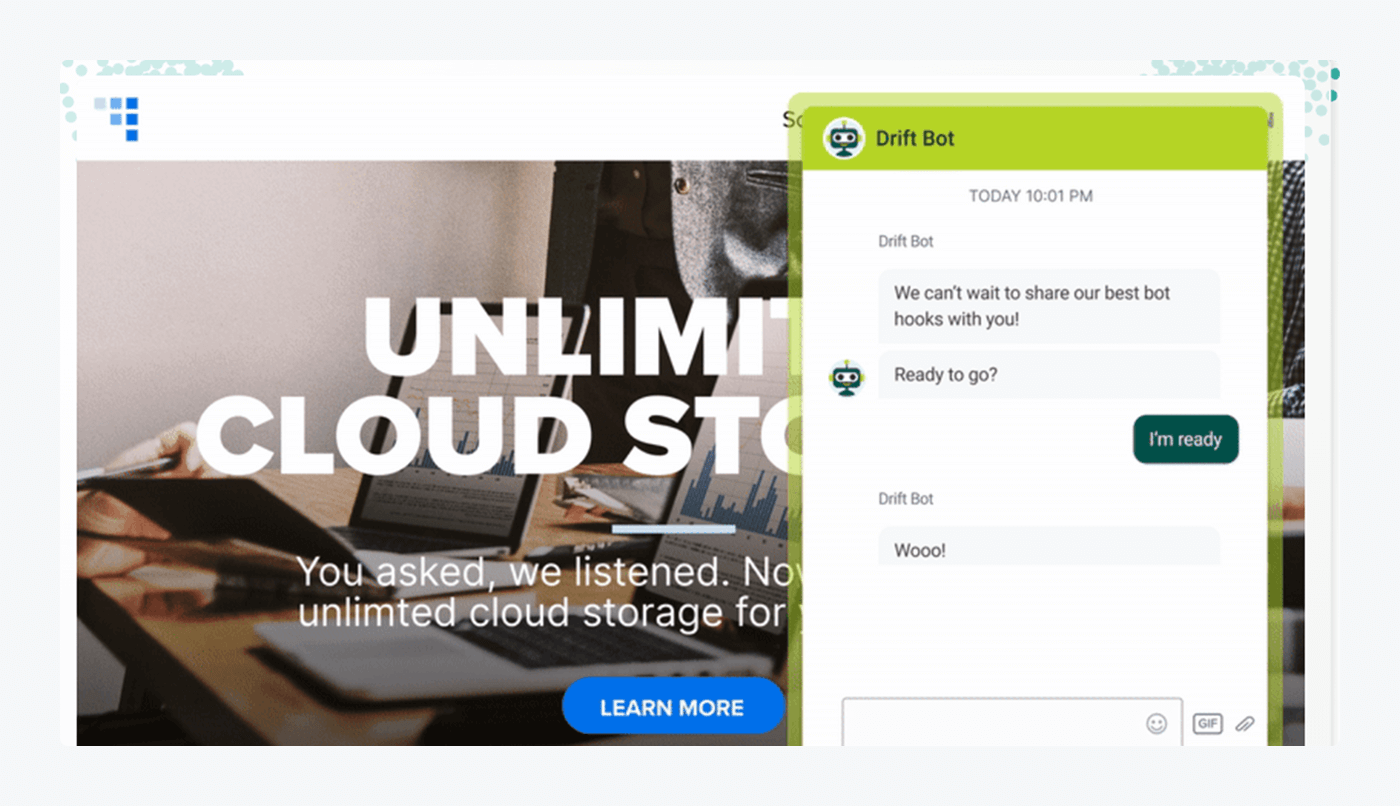
Drift launched in 2014 with a clear focus on conversational marketing. It’s built to help B2B companies generate leads, qualify prospects, and book meetings directly through live chat and AI-powered playbooks. The platform is best suited for enterprise and sales-led teams that prioritize engagement in real time over long-term support workflows.
Read more: Here are the top Drift alternatives and competitors.
Drift vs. Intercom: Key features comparison
Both platforms offer live chat, automation, and integrations, but how they approach support tasks differs.
Below is a breakdown of the most relevant features for support teams, so you can see where each tool excels and where it might fall short.
Knowledge base and self-service
Intercom includes a built-in help center where customers can search for answers, browse articles, and even get suggestions directly within the chat. It’s designed to reduce ticket volume and get users to help themselves. Drift, on the other hand, doesn’t offer a native knowledge base. If you want self-service content, you’ll need to connect it to a third-party system.
Read more: Learn how to build a solid knowledge base chatbot for your needs. Also, be sure to check out how to create a knowledge base with Lyro.
Ticketing and conversation management
Intercom offers a shared inbox tool with built-in ticketing system features like SLAs, conversation routing, and status tracking. This makes it easy for support teams to stay organized as they expand. It’s built for managing ongoing conversations across channels. Drift, by contrast, focuses on real-time chat and doesn’t include full ticketing functionality. For teams that rely on structured follow-ups or detailed case tracking, that could be a limitation.
Read more: Explore the top help desk and ticketing systems.
Drift vs. Intercom: live chat and messaging
Intercom’s live chat works both on websites and inside apps. It comes with options to set up behavioral triggers and target specific user segments. Generally speaking, it’s built to support ongoing conversations and in-product guidance, while Drift’s chat is geared toward capturing leads. It’s set to guide visitors through pre-set chat flows and qualify them or book meetings, making it more sales-focused than support-oriented.
Chatbots and automation
Intercom’s chatbots are designed to ease the workload for support teams. They can automatically suggest help center articles based on what a user types, collect contextual information like name or issue type, and route the conversation to the right person or team. You can also use chatbot automation to trigger messages based on in-app behavior, making it useful for onboarding or proactive support.
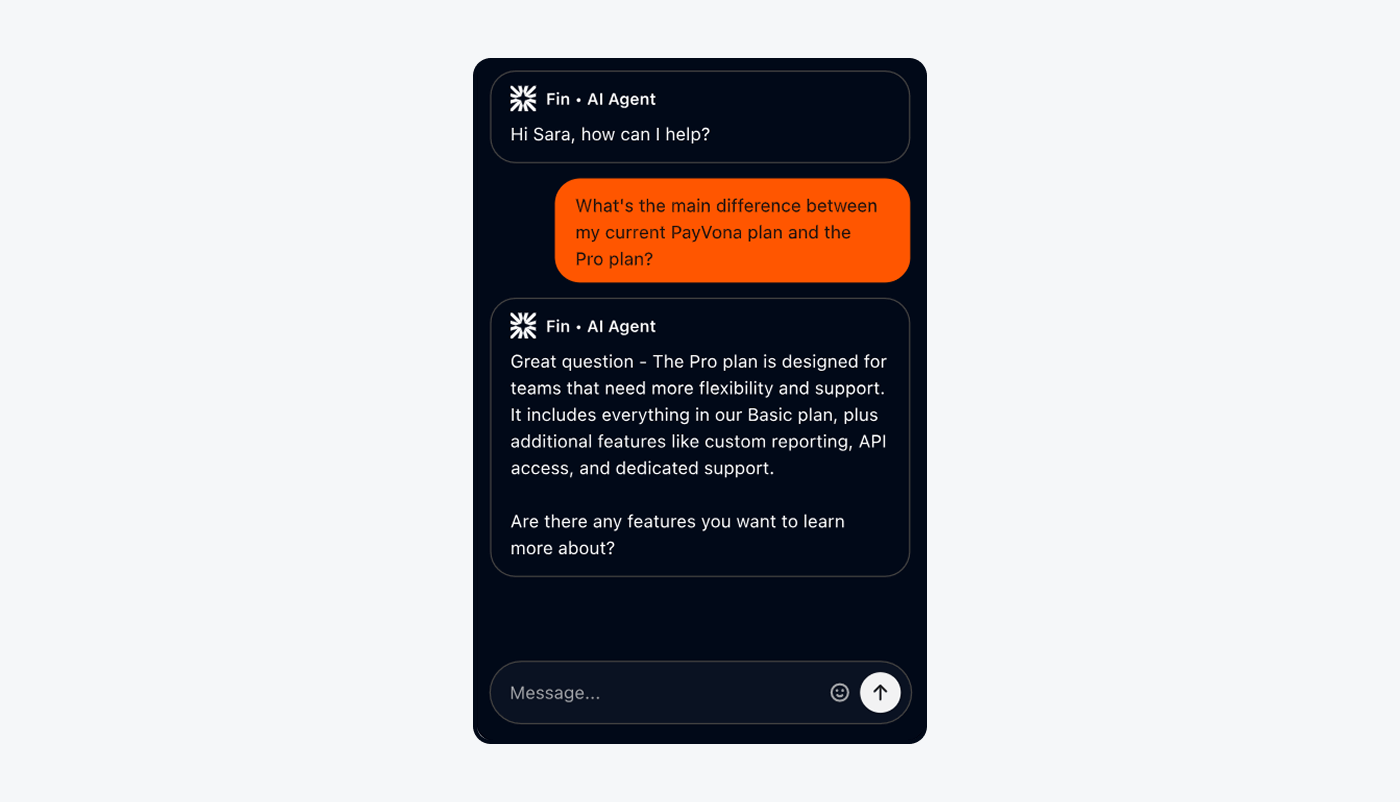
Drift’s chatbots take a more sales-oriented approach. They’re built to start conversations and qualify visitors by asking pre-set questions. Then, they can schedule meetings with your team. Using Drift’s playbooks, you can create chat flows that respond to different scenarios, like returning visitors or someone viewing a pricing page. While Drift bots can hand off to humans when needed, their primary function is to push leads further down the funnel, not to resolve support issues.
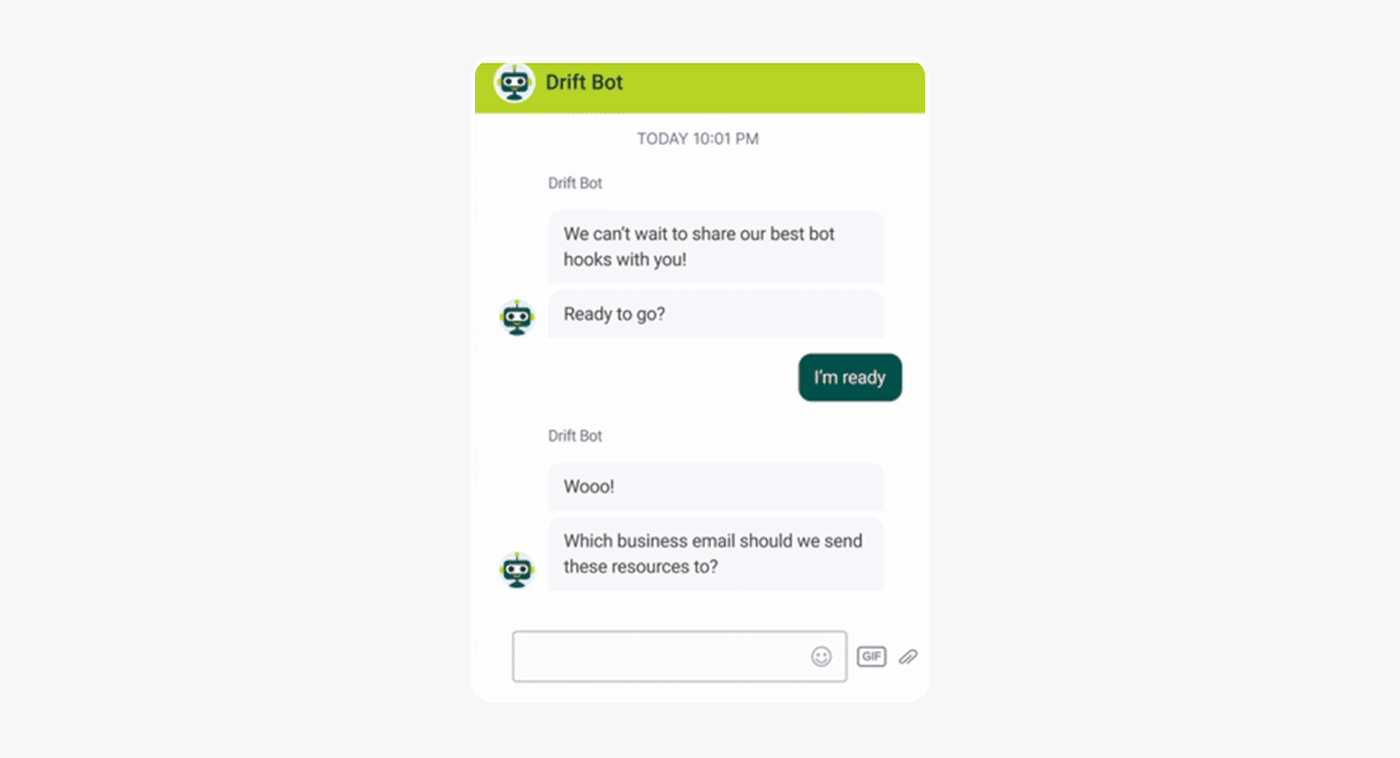
Intercom vs. Drift: Integrations
Intercom offers a broad app marketplace with hundreds of integrations across categories like support, CRM, analytics, and product management. Whether you need to connect a ticketing tool, sync customer data with HubSpot or Salesforce, or trigger actions in Slack, Intercom makes it easy to build a connected support workflow.
Drift also supports key integrations. It connects well with tools like Salesforce, Marketo, and Outreach, helping revenue teams manage leads and track engagement. For support teams, the ecosystem is more limited, especially if you’re looking for deep help desk or product-focused tools.
Skip the comparison and get your team started with Tidio
Read more: Here’s the ultimate Gorgias vs. Zendesk comparison.
Drift vs. Intercom: user experience
Both tools are modern and easy to navigate, but their designs reflect their core focus—support for Intercom and sales for Drift. Here’s how they compare when it comes to day-to-day use and customization.
User interface
Intercom has a clean, intuitive UI that’s built with support workflows in mind. Agents can easily manage conversations and assign tickets without switching tabs. Drift’s interface is also polished but centers around sales flows, like managing playbooks and booking meetings through chat.
Read more: Check out the best chatbot UI design examples.
Customization and personalization
Intercom lets teams create contextual messages based on user behavior, traits, or app activity. You can target different segments and personalize onboarding, proactive messages, or support prompts. Drift also supports personalization, but it’s designed more for tailoring sales chat experiences, like greeting returning visitors or surfacing different playbooks depending on the page someone is viewing.
Learning curve
Intercom offers a wide feature set, which can take time to fully explore. The core tools are easy to grasp, but teams using advanced workflows may need more setup and training. Drift is quicker to get started with if you’re focused on lead engagement, though it may require more workarounds for complex support needs.
Support and onboarding
On top of offering 24/7 live support, Intercom also provides extensive self-service documentation and onboarding guides. Drift gives customers on higher-tier plans access to dedicated success managers, which is great for implementation but may be less accessible on lower plans.
Intercom vs. Drift: pricing plans comparison
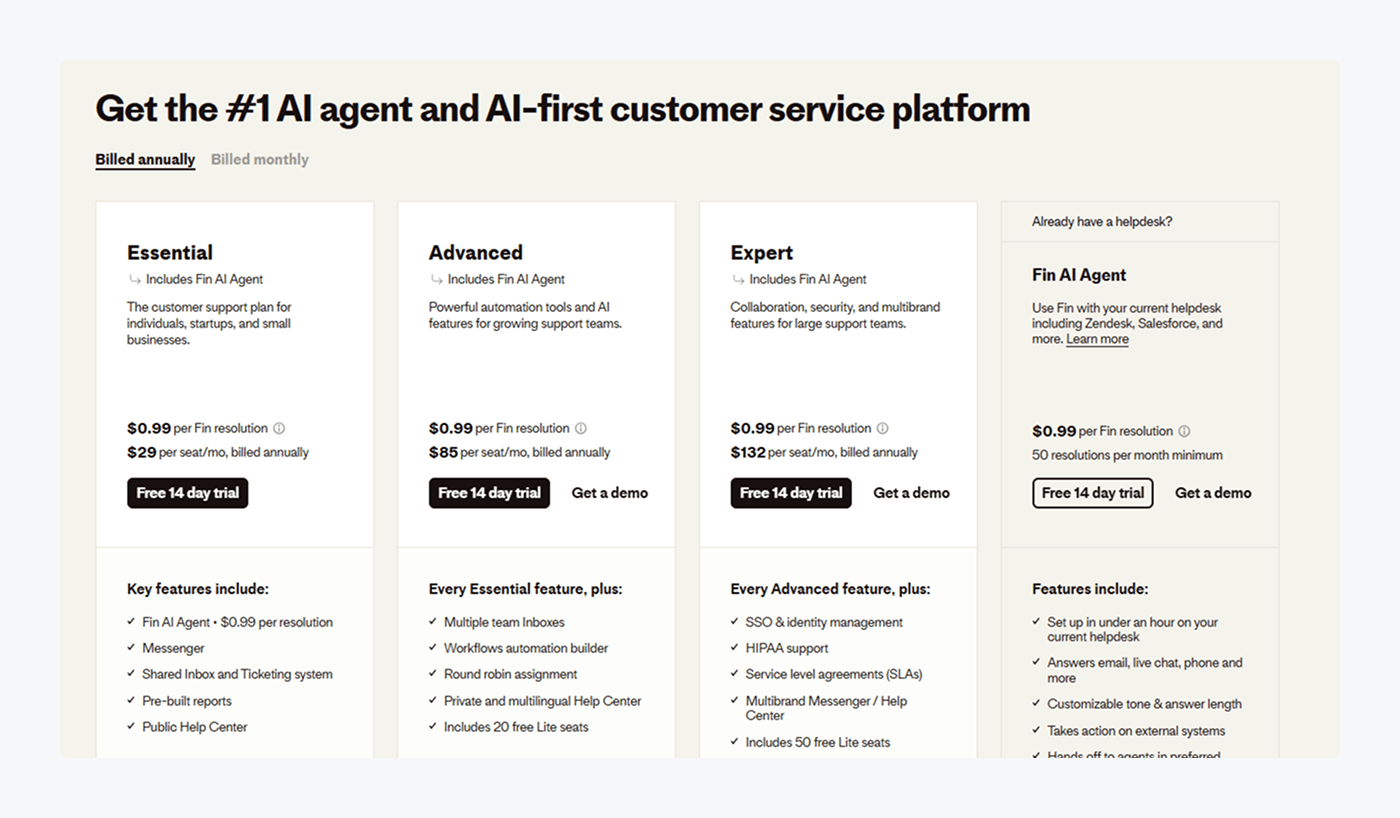
Pricing is one of the biggest differences between Drift and Intercom. Intercom starts at around $29 per seat per month, with costs increasing based on usage, number of contacts, and optional add-ons like advanced bots or product tours. It’s relatively flexible and accessible for small to mid-sized teams, especially those focused on support.
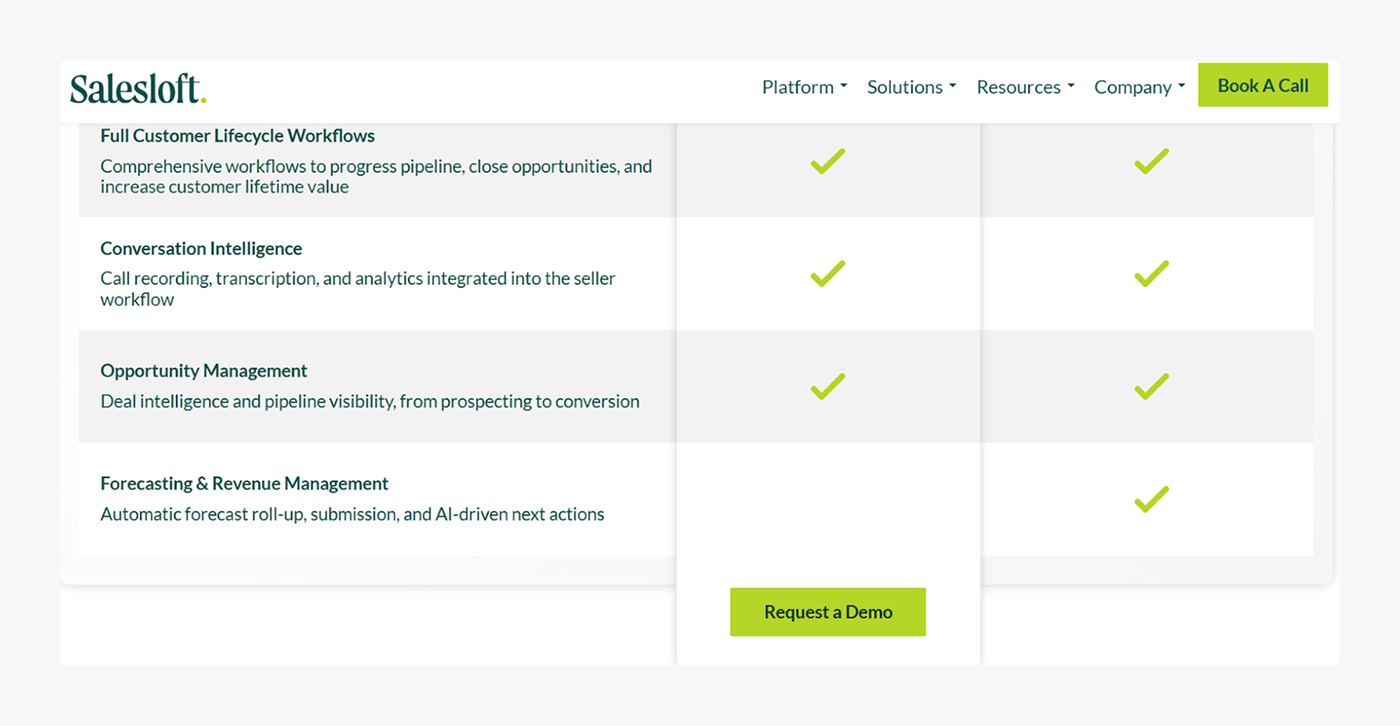
Drift, on the other hand, takes an enterprise-first approach. While you have to contact sales for more info, users report that most plans start around $2,500 per month, and pricing is often customized based on team size and goals. It’s a significant investment, but one that can deliver strong ROI for B2B companies focused on high-value sales pipelines.
For support teams with limited budgets or early-stage companies, Intercom is likely to offer better value for the money. Drift may be worth the price for revenue-focused teams with high lead volumes and a need for personalized sales engagement across a growing customer base.
When it comes to Drift’s pricing, please note that these figures are based on external sources and may not reflect the most current pricing. For the most accurate and up-to-date information, it’s best to reach out directly to Drift’s sales team.
Read more: Here’s the detailed comparison of Intercom vs. Freshdesk.
Drift vs Intercom: ideal use cases and best fit
Intercom is a strong choice for businesses that prioritize customer support and long-term retention. Its built-in ticketing features and proactive messaging tools make it especially useful for SaaS companies and startups that want an all-in-one platform to manage customer conversations.
In contrast, Drift is best suited for B2B companies focused on lead generation and sales acceleration. It’s designed to qualify visitors quickly, book meetings, and support sales teams through real-time conversations. For teams that don’t need structured support workflows, Drift offers a streamlined way to engage prospects directly.
Pros and cons comparison of Intercom and Drift
Every platform has strengths and trade-offs, and the right fit depends on what your team actually needs day to day. Here’s a side-by-side look at where Intercom and Drift shine, and where they might fall short.
| Tool | Pros | Cons |
|---|---|---|
| Intercom | • All-in-one support platform with ticketing, help center, and proactive messaging • AI tools like Fin and Copilot for faster support • Broad integrations across support, product, and CRM tools | • Pricing scales quickly with usage and team size • Learning curve for advanced features |
| Drift | • Great for lead qualification and meeting booking • Easy to use for sales teams • Strong integrations with sales and marketing tools | • No native ticketing or help center • Expensive entry point for full feature access • Not ideal for support-focused teams |
Drift or Intecom: Pick the best platform for your needs
Intercom is the better fit for support-focused teams that need a full-service platform with tools like a shared inbox, help center, and AI-powered automation. On the other hand, Drift is built for B2B sales teams that prioritize lead qualification, chat-based engagement, and booking meetings fast. The best choice depends on whether your daily conversations are centered around support resolution or revenue generation.
If you’re looking for something more balanced and budget-friendly, Tidio is a strong alternative. It combines live chat, ticketing, and multichannel support all in one. There’s also a Lyro AI Agent that can handle repetitive questions and assist agents in real time, all in a setup that’s quick to launch and easy to manage.
You can start for free and see how Tidio fits into your support workflow.
Match Tidio to your needs
FAQ
Tidio is an all-in-one customer communication platform that combines live chat, help desk, and AI automation in a single dashboard. It helps businesses manage customer conversations across multiple channels, like chat, email, and social media. Tidio’s Lyro AI Agent can automatically handle repetitive support requests, while agents focus on more complex cases, improving both response time and efficiency.
Drift is primarily built for sales and lead generation, while Tidio focuses on customer support and service efficiency. Tidio offers ticketing and AI-powered automation for ongoing customer interactions, whereas Drift’s main strength lies in conversational marketing and booking qualified leads. Businesses seeking a cost-effective, support-oriented alternative to Drift often choose Tidio for its simplicity and built-in AI features.
Tidio and Intercom both provide multichannel support and automation, but Tidio offers a more accessible and budget-friendly setup. Intercom is ideal for larger teams needing advanced workflows and product integrations, while Tidio gives smaller and mid-sized businesses access to similar tools at a fraction of the cost. Tidio’s Lyro AI Agent also simplifies automation setup, requiring no coding or complex configurations.
Yes. Tidio includes both rule-based chatbots and an advanced AI agent (Lyro) that uses natural language understanding to resolve up to 67% of repetitive questions. It can pull answers directly from your knowledge base, connect to ecommerce platforms for order updates, and assist human agents during live conversations.
Absolutely. While Tidio is accessible for small and mid-sized businesses, it also offers scalable plans with advanced features such as multi-agent ticketing, automation workflows, and integrations with CRM and ecommerce tools. It’s a flexible option for companies that want enterprise-grade features without the high entry costs of platforms like Intercom or Drift.

